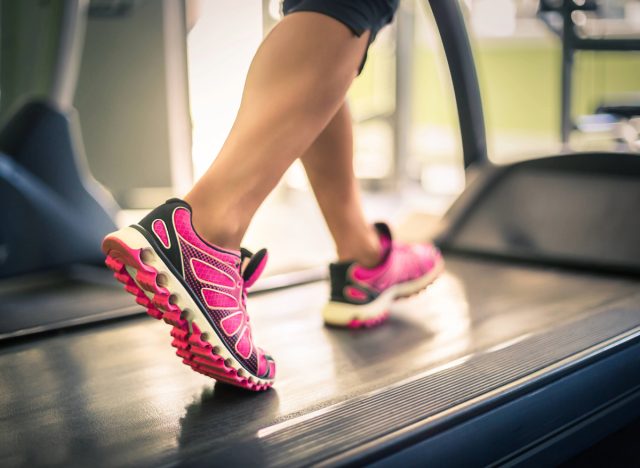Running Outside vs. a Treadmill: Which is Better for Weight Loss?

Running is a go-to exercise for many fitness enthusiasts when it comes to shedding those extra pounds. But with so many options available, the question arises: Should you take your run outside or stick to the trusty treadmill? Each option has its own benefits and challenges, making the choice more complex than it might seem. Whether you enjoy the fresh air and changing scenery of an outdoor run or the controlled environment of a treadmill, both can help you achieve your weight loss goals.
Picture this: the sun rising as you jog along a scenic trail, your breath syncing with the rhythm of nature. Or imagine pounding away on a high-tech treadmill, your favorite playlist pumping you up, and all your metrics displayed right in front of you. Both scenarios sound appealing, but which will help you burn more calories and lose weight faster? The debate between outdoor and treadmill running is a hot topic in the fitness world, with passionate arguments on both sides.
In this article, we'll delve into the pros and cons of each option, examining factors like calorie burn, convenience, weather, and injury risk. By the end, you'll have a clearer picture of which type of running might be best for your weight loss journey.
The Benefits of Running for Effective Weight Loss

Running is one of the most effective exercises for weight loss, thanks to its ability to burn many calories both during and after your workout. The calories burned during running vary depending on speed, duration, and body weight. On average, a person weighing around 155 pounds burns approximately 288 calories per 30 minutes of running at a moderate pace.
One of the most incredible things about running is the afterburn effect. Even after you've crossed the finish line (or hung up your headphones), your body keeps burning calories to recover. This phenomenon, Excess Post-exercise Oxygen Consumption (EPOC), translates to more calorie burning over time, making running a weight loss champion. EPOC occurs because your body uses additional oxygen to restore muscle glycogen, repair muscle fibers, and return to its resting state, all of which require energy and thus burn calories.
Running is incredibly versatile, whether you're outdoors or on a treadmill. You can change your pace, throw in bursts of speed (intervals), or explore different terrains to keep your body challenged and prevent plateaus. Interval training, in particular, can significantly boost your calorie burn by alternating between high-intensity sprints and recovery periods, which keeps your metabolism elevated even after your run. Whether you crave the thrill of the outdoors or the predictability of the treadmill, running remains a top choice for shedding pounds. By incorporating various running styles and intensities, you can continuously challenge your body and maximize your weight loss efforts, giving you a range of exciting options for your fitness journey.
Running Outside vs. Treadmill: Which Burns More Calories?

Fitness enthusiasts love to argue about which burns more calories: running outside or pounding the treadmill. There's some truth to the idea that outdoor running takes the lead. Wind resistance, uneven terrain, and those natural hills all force your body to work harder, translating to more calorie burn. Plus, the ever-changing scenery and fresh air can make your outdoor runs more enjoyable, potentially leading you to go further and burn even more.
However, treadmills offer a controlled environment. You can precisely set your pace, incline, and run time, giving you a sense of control over your workout. This precision allows for structured interval training, which can supercharge your calorie burn in a shorter amount of time. Many treadmills even have features that mimic the outdoors, like adjustable inclines and pre-programmed workouts, providing a predictable yet effective workout experience.
In the end, the best choice depends on your preferences. Do you crave the dynamic experience of running outdoors, or do you prefer the structured environment of a treadmill? Both options can effectively help you reach your weight loss goals.
Advantages of Running Outdoors for Weight Loss

There's something undeniably special about running outdoors. Fresh air, ever-changing scenery, and a connection with nature can take your workout from a chore to an adventure. A significant perk of outdoor running is the natural variation in terrain. Hills, trails, and uneven surfaces work different muscle groups, giving you a more well-rounded workout and burning more calories. Plus, the outdoor elements keep your body guessing, preventing that dreaded workout plateau.
The mental health benefits of outdoor running can also contribute to weight loss. Sunlight exposure and experiencing new environments can boost your mood and reduce stress, making it easier to stay motivated and consistent with your fitness goals.
Finally, running outside offers not only physical benefits but also financial ones. It's cost-effective and convenient—no gym membership or fancy equipment is required! Whether pounding the pavement in your neighborhood or exploring a scenic trail, outdoor running offers a refreshing and effective way to reach your weight loss objectives without breaking the bank.
Treadmill Workouts: Top Benefits for Weight Loss

Running on a treadmill has its advantages, especially for weight loss. One of the biggest perks is that you can run come rain or shine, snow or sleet, keeping your fitness routine consistent. The controlled environment allows you to fine-tune your workouts with specific intervals, inclines, and speeds designed to maximize calorie burn and boost cardiovascular health. Many treadmills even have built-in programs to keep your workouts varied and challenging.
Another significant benefit of treadmill running is the reduced risk of injury. The cushioned surface is easier on your joints compared to concrete or asphalt. This makes treadmills an excellent option for people with previous injuries or joint concerns. The lower impact allows you to run for longer durations and more frequently without the discomfort of running on hard surfaces. Plus, having all your workout metrics displayed in real-time will enable you to track your progress and stay focused on your weight loss goals.
With its convenience, safety, and efficiency, treadmill running is a valuable addition to any weight loss regimen.









